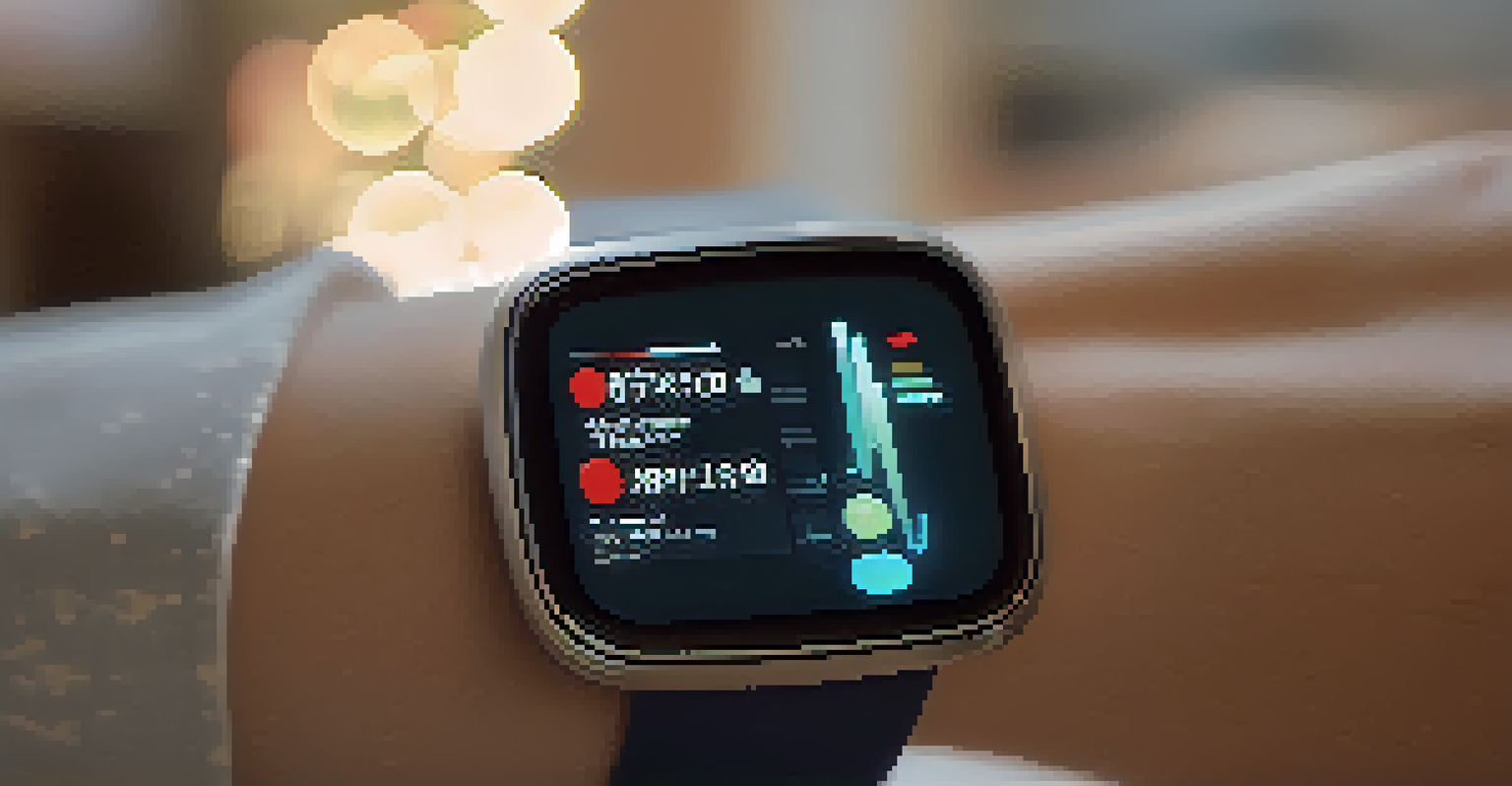Wearable Tech: Monitoring Biological Responses to Entheogens

Understanding Entheogens and Their Effects
Entheogens are substances that can alter consciousness, often used in spiritual or therapeutic contexts. Common examples include psilocybin mushrooms and ayahuasca, which can lead to profound psychological experiences. Understanding how these substances affect individuals is crucial for both safety and efficacy in their use.
The mind is everything. What you think, you become.
As the popularity of entheogens grows, there's a need to comprehend their biological impacts better. Different people can react in unique ways, influenced by factors like genetics, environment, and mental health. This variability highlights the importance of monitoring physiological responses during entheogenic experiences.
By studying these reactions, researchers can gain insights into the potential benefits and risks associated with entheogenic use. This understanding lays the groundwork for a more informed approach to integration in therapeutic and recreational settings.
The Rise of Wearable Technology in Health Monitoring
Wearable technology, such as fitness trackers and smartwatches, has transformed how we monitor health. These devices can track heart rate, sleep patterns, and even stress levels, providing real-time data for users. This shift from traditional health monitoring to portable tech allows for more individualized insights into our biological states.

With the advancement of sensors and data analytics, wearables can now provide a comprehensive view of our physiological responses. They can detect changes in biometrics that may occur during experiences with entheogens, offering valuable feedback for users. This data can help individuals understand their reactions and journey.
Entheogens Alter Consciousness
Entheogens, like psilocybin and ayahuasca, can profoundly impact consciousness, highlighting the need for understanding their effects.
As wearables become more sophisticated, they hold the potential to bridge the gap between subjective experiences and objective measurements. This fusion of technology and human experience can empower users to make informed decisions about their use of entheogens.
How Wearables Monitor Biological Responses
Wearable tech utilizes sensors to collect data on various physiological parameters. For instance, heart rate variability (HRV) can indicate levels of stress or relaxation, which are particularly relevant during entheogenic experiences. These metrics can provide insights into how the body is responding to these substances in real time.
Technology is best when it brings people together.
Additionally, wearables can measure skin conductivity, temperature, and movement, all of which can change during altered states of consciousness. By monitoring these metrics, users can gain a clearer understanding of their physical and emotional states while under the influence of entheogens. This information can help facilitate safer and more meaningful experiences.
The integration of these technologies with apps allows users to visualize their data over time, creating a personal dashboard of their experiences. This not only enhances self-awareness but also fosters a deeper connection to the process of exploration with entheogens.
Benefits of Monitoring Entheogenic Experiences
Monitoring biological responses during entheogenic experiences can provide numerous benefits. Firstly, it can enhance safety by alerting users to potentially harmful physiological changes. For instance, an unexpected spike in heart rate may signal the need to take a step back, promoting a more cautious approach.
Secondly, tracking physiological data can foster a deeper understanding of personal thresholds and reactions. Users can identify patterns in their responses, leading to more informed decisions about dosage and setting. This self-knowledge can significantly improve the quality of the entheogenic experience.
Wearables Enhance Health Monitoring
Wearable technology enables real-time tracking of physiological responses, aiding users in understanding their reactions during entheogenic experiences.
Lastly, sharing this data with professionals can lead to better support and integration post-experience. As the research on entheogens continues to grow, having empirical data can contribute to a more nuanced understanding of their effects and applications in therapeutic settings.
Challenges in Using Wearables for Entheogen Monitoring
While the potential for wearables in monitoring entheogenic experiences is exciting, there are challenges to consider. One significant hurdle is the accuracy of the devices; not all wearables are designed for the unique physiological changes associated with entheogens. Users must be aware of the limitations of their devices to avoid misinterpretation of data.
Another challenge lies in the subjective nature of entheogenic experiences. While biometric data can provide insights, the emotional and psychological aspects of these journeys are harder to quantify. This complexity means that wearables should be used as tools to complement, rather than replace, personal reflection and integration.
Finally, privacy concerns surrounding data collection and sharing must be addressed. Users need to feel secure about how their data is used and who has access to it. Establishing transparent policies and practices is essential for fostering trust in wearable technology within this context.
Future of Wearable Tech in Entheogen Research
The future of wearable technology in the realm of entheogens is both promising and dynamic. As research continues, we can expect advancements in sensor technology that will provide even more precise measurements of biological responses. This evolution will enhance our understanding of how entheogens interact with the body and mind.
Moreover, the integration of artificial intelligence (AI) into wearables could lead to personalized insights. Imagine a wearable that not only tracks your data but also learns your patterns and offers tailored recommendations for your next experience. This level of customization could greatly enhance safety and efficacy.
Benefits of Data in Entheogenic Use
Monitoring biological responses during entheogenic experiences fosters safety, enhances self-awareness, and supports informed decision-making.
As the conversation around entheogens continues to evolve, so too will the tools we use to explore them. By embracing these technologies, we can create a more informed and respectful approach to the use of entheogens in both therapeutic and recreational contexts.
Conclusion: Embracing Technology for Safe Exploration
In conclusion, the intersection of wearable technology and entheogens opens up exciting possibilities for monitoring biological responses. By leveraging these tools, individuals can enhance their understanding of their experiences, promoting safety and self-awareness. The integration of technology into the exploration of consciousness is a testament to our desire for connection and understanding.
As we move forward, it’s essential to approach this field with both curiosity and caution. The benefits of monitoring are clear, but so are the challenges we face. Balancing innovation with responsibility will be key to unlocking the full potential of wearables in this unique landscape.

Ultimately, embracing technology as a companion in our journeys with entheogens can lead to profound insights into ourselves and the world around us. Together, let’s explore the depths of consciousness with an informed, respectful, and safe approach.